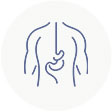Breast Reduction Surgery Toowoomba
Breast reduction surgery, also known as mammoplasty, is done to remove extra fat, tissue, and skin from your breast. This will help lift and reshape your breast and improve the positioning of your nipple. A breast reduction can eliminate back pain, shoulder pain, and even make you look leaner.
While some women just have a genetic abundance of breast tissue, for others, it can result from pregnancy, wright gain or menopause. Regardless of the reason, overly large breasts can be physically painful. They may also make you feel dumpy, self-conscious, and even keep you from wearing the clothes that you want.
Patients who undergo breast reduction are some of the most satisfied of all plastic surgery patients because this is the procedure that can literally change your everyday life.
We mostly recommend breast reduction with liposuction to contour your breast shape with best aesthetic result especially if you have bulky tissue on your lateral chest wall which cannot be removed surgically.
You can choose to have breast reduction surgery after or at the same time as another procedure to help your breasts match in size and shape. If you’re having a lumpectomy (surgery to remove a tumor from your breast), you may have the option to have an oncoplastic reduction at the same time as your surgery. This is when your Breast Surgeon, Dr Davarpanah rearranges the tissue remaining in your breast during your surgery. You may choose to have a reduction on your other breast so that your breasts are more similar in size.
You may need to get a mammogram before this surgery if you have not had any mammogram in last one year and you are above 40 years old.
Who are not suitable for surgery?
If you are a smoker or have comorbidities, you may not be a good candidate for this procedure as the risks of poor healing and infection leading to permanent scarring and poor aesthetic results may be much higher.
What is the difference between breast reduction and breast lift surgery?
A breast reduction is really a breast lift that also removes excess breast volume. Some patients, particularly those whose breasts have dropped post children, don’t have an excess in breast volume. Their breast skin has simply stretched. So, lifting the breasts and removing the excess skin is enough. But for patients who have too much tissue, the skin envelope must be reduced, and the extra tissue removed. I am terrified that a scar on the breast will make me undesirable. Do you find this to be true? Not at all. What most people find desirable is confidence. Restoring your body to its proper proportion by reducing the size of your breasts is going to make you feel better about yourself. And in my experience, this self-confidence translates into every aspect of my breast reduction patient’s lives.
Post Operative Instructions
Post Operative Pain Management
- After having surgery, it is expected you will experience some pain even with pain medication. This is a normal part of recovery. You will need to take Panadol and Neurofen regularly for first 72 hours.
- You will be provided a prescription for pain medicine that will last until your first return post-op visit.
WOUND MANAGEMENT
After your surgery, your incisions will be closed with dissolvable sutures (stitches). The sutures will dissolve on their own. They don’t need to be taken out. In most cases, You’ll have a specialised vacuum dressing covering your incisions for 4-5 days after surgery. Drainage You may have small amounts of bloody drainage coming from your incisions for a few days after your surgery. This is normal. You may see more drainage especially after showering. If you have heavy, bright red, bloody drainage, or if your breast becomes firm or swollen in a short period of time, place extra padding in your surgical bra and call your healthcare provider. The bottom of your breast where the incisions come together may take a little longer to heal than the rest of the incisions.
We might send you home with drain. Our nurse will teach you how to care for it before you go home and give you the resource caring for your drain.
Drainage tubes will be removed when the drainage is less than 30 cc per day for 1- 2 days. This usually happens in 3-7 days.
AFTER SURGERY CARE
- Have someone drive you home after surgery and help you at home for 1-2 days.
- Get plenty of rest and follow a balanced diet.
- Constipation is a side effect of decreased activity, use of pain medicines, and dehydration. Be sure to walk, drink fluids regularly, and consider adding raw fruit to your diet. Your doctor may prescribe a stool softener along with the narcotics. Call our office if constipation becomes an issue.
- Do not take aspirin or any products containing aspirin unless approved by your surgeon.
- Do not smoke or be around a smoker. This can be the most significant cause of serious healing issues. What should my activity level be?
- Start walking the evening of surgery – this helps to reduce swelling, lower the chance of developing blood clots and/or pneumonia, and avoid constipation.
- Do not drive until 2 weeks after surgery or you have full range of motion with your arms and can stop the car or swerve in an emergency.
- Refrain from vigorous activity for 4-6 weeks. Increase activity gradually as tolerated. After 2 weeks you may perform light lower body exercise but must wait the full 6 weeks prior to performing upper body exercises.
- Avoid lifting anything over 5 pounds for 4-6 weeks.
- Perform arm/shoulder range of motion exercises four times a day (as directed by your Plastic Surgeon.
For 4 weeks after surgery, please avoid the following:
- Physical work of any kind (house, yard, dishes, laundry)
- Sports/working out (including treadmills)
- Soaking in tubs, pools, whirlpools
- Employment activities can be resumed in 4-6 weeks (unless otherwise discussed with your surgeon)
How do I take care of my incision?
- You may shower 48 hours after removal of the drainage tubes.
- Avoid exposing scars to the sun for at least 12 months.
- Always use a strong sunblock if sun exposure is unavoidable (SPF 30 or greater).
- Keep incisions clean and inspect daily for signs of infection.
- No tub soaking of drain areas while drains are in place.
- Wear your surgical bra 24/7 as directed for 6 weeks post op.
- Avoid bras with stays and underwires for 3 months.
- You may pad the incisions with gauze for comfort (panty liners also work well as they are absorbent and inexpensive).
- If your breast skin is dry after surgery, you can apply a moisturizer several times a day. Keep the suture area dry.
How should I expect to feel?
- Despite the three layers of sutures closing your incisions, there will be some oozing of tissue fluid from them for 2 days or so. This will soak up on the gauze and the bra to look like more than it really is. Report any significant drainage to the clinic.
- Most of the higher discomfort will subside after the first few days.
- You may experience temporary soreness, bruising, swelling and tightness in the breasts as well as discomfort in the incision area.
- You may not have normal sensation in the nipples. This may be more or less than usual, and usually returns over a couple of months.
- Your first menstruation following surgery may cause your breasts to swell and hurt.
- You may have random, shooting pains, tingling, or other strange sensations in the skin for a few months. These will subside. What will it look like?
- Most of the discoloration and swelling will subside in 2-4 weeks.
- Your breasts will feel firm to the touch initially but will soften with time.
- A more natural shape will occur as the breast’s “settle” in a slightly lower position over the first few months.
- Scars may be red and thick for 6 – 12 months (longer in lighter-skinned patients). In time, these usually soften and fade. What follow-up care will I receive?
Sutures are dissolvable. Any suture ends deliberately left out through the skin will be clipped on the first clinic appointment.
When should I call my doctor?
- If you have increased swelling or bruising, particularly one side greater than the other.
- If swelling and redness persist for a few days.
- If you have increased redness along the incision.
- If you have severe or increased pain not relieved by medication.
- If you have any side effects to medications, such as, rash, nausea, headache, vomiting or constipation.
- If you have an oral temperature over 38 degrees.
- If you have any yellowish or greenish drainage from the incisions or notice a foul odor.
- If you have bleeding from the incisions that is difficult to control with light pressure.
- If you have a loss of feeling or motion.
- Any other unanswered concerns.

Aesthetic Surgery
Breast Reduction and Lift, Otoplasty, Abdominoplasty, Rhinoplasty, Liposuction, Gynecomastia and more

Reconstructive Surgery
Trauma Injuries and Chronic Wounds, Skin Cancer Removal or Repair, Management of Chronic Wounds

Breast Surgery
Oncoplastic Breast Surgery, Lumpectomy, Mastectomy, Breast Benign Disease, Sentinel Node Biopsy

Hand Surgery
Our surgeons are experienced in treating Hand Disease and Hand Trauma reconstructive procedures

General Surgery
Hernias, Gall Bladder Surgery, Colonoscopy, Gastroscopy, Thyroid Surgery, and Bowel Surgery
Not Sure What You Need?
Simply give us a call and book an appointment for yourself. Click below and contact our practice to arrange a consultation time to go through your treatment options. We are here to help.
